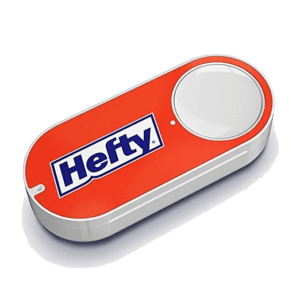I attended the annual Consumer Electronics Show (CES) last month, and the biggest single category again this year was the Internet of Things, or IoT. Evidently, out of nearly 4,000 exhibiting companies, nearly a quarter displayed an IoT product.
Meanwhile, for the last two years running, “Internet of Things” has been at “peak of inflated expectations” in Gartner’s Hype Cycle for Emerging Technologies.
So it could go either way. In Possible Future #1, consumer-level IoT shares the fate of 3D television, which was everywhere six years ago and is basically gone now. In Possible Future #2, CES renames itself to “the IoT show” and IoT becomes so ubiquitous that we no longer talk about it as a thing.
Making the case for Future #1, I’m still seeing a great deal of “IoT party tricks” out there. I’m not convinced that people really need a Bluetooth-connected home pregnancy test, for instance.
Overall, though, I’m betting on Future #2. One reason is to look at the Amazon Dash program, which seems like it might be a harbinger of a more well-thought-out consumer IoT.

About a year ago, Amazon launched the Dash button. If you haven’t seen it, it’s a small battery-powered, Wi-Fi-connected button that you can place in your home. It has one job: You push the button, and Amazon sends you a single item via Amazon Prime. For example, you might put a Dash button on your washing machine that orders more Tide, and you might have a different one on your dishwasher that orders more detergent. The benefit is clear: When you see that you’re low on something, you just hit a button and get more two days later. (And as you might expect, they’ve been hacked for other uses, which is cool even though the hack involves having a computer on your network that can listen for the button’s ARP probe, and therefore probably isn’t super useful.)The buttons are basically free. They cost $5 each, but this amount is refunded on your first order using the button.
I can’t find any public information about how successful (or not) the Dash buttons have been. It would be interesting to learn if Dash buttons increase brand loyalty for the brand (e.g., Tide), or only for Amazon, or both. That data could determine how the Dash is both marketed and received moving forward.
My back-of-the-envelope guess is that even in high volumes, each button is likely to cost $10 or more by the time it gets to your house. (Here’s a teardown of one: It’s based on an STM MCU with a Cortex M3, and a Broadcom Wi-Fi part.) So I’m guessing these are heavily subsidized — probably by the big-name brands whose logos are featured on each button. Otherwise, why wouldn’t Amazon make a generic Dash button in different colors, and let you pick any product they sell to associate it with?
More interestingly, perhaps, is Amazon’s Dash Replenishment service, which just launched last month. This offering is marketed to manufacturers of connected devices that have consumables, such as printers. The end user can connect their device directly to their Amazon Prime account, and then Amazon will automatically send new cartridges whenever supplies run low — without even a button to push.
Now, I’m not saying that either of these Dash programs is the be-all, end-all of IoT, but I do think they represent interesting experiments. In the end, I continue to believe that the key to a useful consumer IoT is solving actual problems — even seemingly silly and simple ones.
